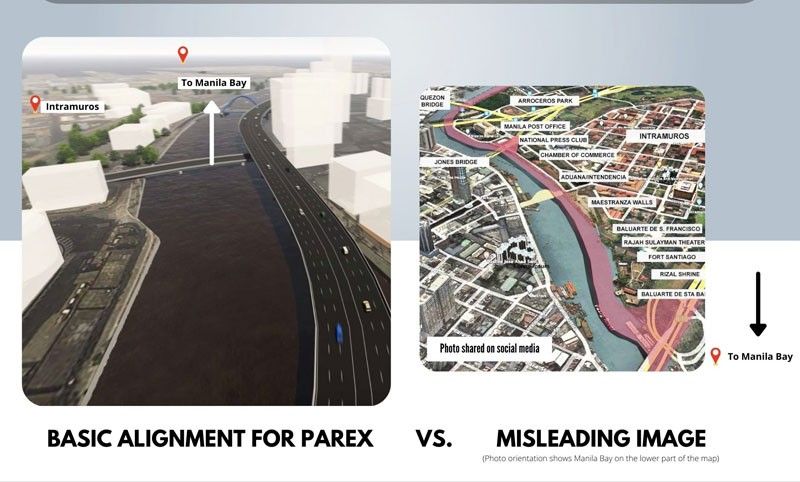Ang: PAREX will not impact heritage sites

MANILA, Philippines — Tycoon Ramon Ang said San Miguel Corp.’s proposed Pasig River Expressway (PAREX) would avoid the Intramuros area, the historic walled city, contrary to information spreading on social media.
The project takes into full consideration the presence of historical sites along its alignment and that its final design may be adjusted to address concerns raised against the project, Ang said.
Ang, president and CEO of San Miguel, cautioned the public against “misinformation being spread to undermine the many benefits of the project to the greater number of Filipinos, even this early in its development.”
Among the “lies and misconceptions” being spread about the project are that it will impact heritage sites in Intramuros, Manila, Ang said.
“For the record, per the basic alignment developed in consultation with, and approved by the government, PAREX will not run on the Intramuros side, but on the other side, along Binondo,” Ang said, denying an illustration of the supposed alignment of PAREX showing it runs alongside Intramuros.
“Like many who oppose the project, we are also Filipinos who value our heritage sites, especially Intramuros, where we helped in the restoration of the Manila Cathedral a few years back,” Ang said.
He said, all valid concerns raised against the project are being taken into consideration in the detailed engineering design phase for the project which is just starting or the phase in the project’s development where the features and alignment of the project are determined.
The features of the project, such as its Bus Rapid Transit, bike lanes, pedestrian walkways, and other features will also be finalized during this stage, he said.
“Right now, what we have is a basic alignment, developed with, and approved by the government. And while this basic alignment already avoids Intramuros, it is by no means final,” Ang said.
The project’s design will take into consideration the concerns raised by some sectors.
“Other areas that people will have issues with, can still be adjusted, based on inputs from government and stakeholders during the detailed engineering design stage,” Ang said.
Ang cited as example another area critics are concerned about, the Arroceros Forest Park.
“In the current basic alignment, the section of the PAREX runs alongside the area,” he said.
But Ang said this could easily be remedied, via multiple engineering options. This includes raising or lowering the expressway, or moving it altogether.
“We cannot afford just a solution that will build landscaped walkways and beautify the surroundings but does not solve the very real urban problems affecting millions of Filipinos everyday, that have sadly become so normalized in our society, that some would rather not do anything instead of disrupting the status quo,” he said.
Urban planner and architect Paolo Alcazaren, among those who are opposed to the PAREX project posted on his Twitter a list of heritage sites that would be affected by the controversial expressway.
The sites, he said, are protected by Republic Act 10066 or the National Cultural Heritage Act.
On his list are: Quezon Bridge, Jones Bridge, Arroceros Park, Manila Post Office, National Press Club, Chamber of Commerce, Aduana/Intendencia, Maestranza Walls, Baluarte de S. Francisco, Rajah Sulayman Theater, Fort Santiago, Rizal Shrine and Baluarte de Sta. Barbara, some of which are in Intramuros.
Meanwhile, SMC said it would continue with its Pasig River Cleanup project with or without its P95-billion PAREX project.
“With or without the PAREX project, we will continue to clean the Pasig River. Water sustainability has been our advocacy within the company for many years now,” Ang said.
Transport and environmental groups recently expressed concern over the construction of the PAREX, saying the project will worsen pollution and traffic congestion.
The P2 billion Pasig River program aims to extract three million metric tons of silt and solid waste from the river, or a monthly target of at least 50,000 metric tons (MT) in five years.
SMC said a total of 54,000 MT of silt and solid waste had been removed from the Pasig River since the project started in July, particularly from two of its shallowest sections, at the Pandacan and Malacañang areas, both in the city of Manila.
A global study published recently named the Pasig River as the top polluter of the world’s oceans, dumping around 38,000 tons of plastics into the oceans yearly.
It also revealed that 28 percent of the rivers responsible for global plastic pollution are in the Philippines. – Catherine Talavera
- Latest
- Trending






























